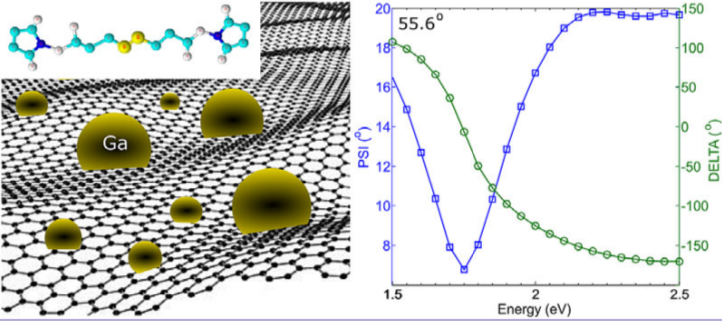more »
Sensing biological molecules on chip has become an irreplaceable component of modern medical diagnostics. Blood, saliva, urine, and other bodily fluids can be tested for the presence of viruses, bacteria, and other harmful agents using numerous methods that typically rely on chemical reactions between the biomolecule and a reagent. Recently, other biosensing methods are being tested, in particular those that rely on optical readout, which can provide a fast and reliable sensing platform.
Surface plasmon resonances (SPR) have surfaced as an interesting candidate among the optical sensing methods. SPR is a term that describes the interaction of light with metal nanoparticles. Light of a specific color is concentrated around the nanoparticle with high intensity in a small volume, enabling detection of minute concentrations of molecules near the nanoparticle, down to the level of single molecules or cells. The specific wavelength (color) of light that excites the SPR is defined by the nanoparticle shape and size.
Adding a graphene layer below the metal nanoparticles increases sensitivity of SPR sensors, but graphene also often plays the role of protein or molecule immobilizer. The typical metal used for SPR is gold, due to its favorable optical properties (low losses). However, the metal atoms in gold nanoparticles tend to distort the crystal structure of graphene, lowering material quality and decreasing SPR sensitivity.
Now a team of researchers in Madrid has grown gallium nanoparticles on Graphenea’s CVD graphene for SPR biosensing. Gallium, a group III metal, forms weaker bonds than gold with graphene, causing almost no distortion of the crystal structure. The device showed a strong SPR response and the researchers demonstrated sensing of organic molecules. The research was published in “physica status solidi b”, a leading journal for solid state physics.

Gallium was deposited on graphene with thermal evaporation and annealing, a simple, low cost, and reproducible method. SPR was measured with ellipsometry, commonly used to measure optical properties of thin films and nanoparticles. Interestingly, the research showed that nanoparticles grown on graphene tend to have a narrower size distribution compared to those grown on a bare SiO2 substrate. A narrow size distribution is favorable for selectivity of SPR sensors.
To show sensing behavior, the researchers functionalized the surface with 3,3′-dithiodipropionic acid di(N-succinimidyl ester) (DTSP), a crosslinking reagent. DTSP is commonly used to link organic biomarkers to surfaces, such as gold. Sensing operation was demonstrated by a clear shift in plasmonic resonance after adding DTSP. Furthermore, it was shown that the sensor that included graphene worked better than one without graphene.
via Graphenea
